I need to do something similar to what's shown in this excellent question:
Q-Q plot with ggplot2::stat_qq, colours, single group
but unfortunately there's a slight difference which is blocking me. Unlike the original question, I do want to separate the quantile computations by group, but I also want to add a QQ-line for each group. Following the OP's code, I can create the quantile-quantile plots by group:
library(dplyr)
library(ggplot2)
library(broom) ## for augment()
set.seed(1001)
N <- 1000
G <- 10
dd <- data_frame(x = runif(N),
group = factor(sample(LETTERS[1:G], size=N, replace=TRUE)),
y = rnorm(N) + 2*x + as.numeric(group))
m1 <- lm(y~x, data=dd)
dda <- cbind(augment(m1), group=dd$group)
sample_var <- "y"
group_var <- "group"
p <- ggplot(dda)+stat_qq(aes_string(sample=sample_var, colour=group_var))
p
How can I add the quantile-quantile lines for each group? NOTE: ideally I would like to specify the sample column and the group column at runtime. That's why I used aes_string.
EDIT to better clarify my problem, I add code to compute quantile-quantile lines when there's only one group. I need to generalize the code to multiple groups.
library(dplyr)
library(ggplot2)
library(broom) ## for augment()
# this section of the code is the same as before, EXCEPT G = 1, because for
# now the code only works for 1 group
set.seed(1001)
N <- 1000
G <- 1
dd <- data_frame(x = runif(N),
group = factor(sample(LETTERS[1:G], size=N, replace=TRUE)),
y = rnorm(N) + 2*x + as.numeric(group))
m1 <- lm(y~x, data=dd)
dda <- cbind(augment(m1), group=dd$group)
sample_var <- "y"
group_var <- "group"
# code to compute the slope and the intercept of the qq-line: basically,
# I would need to compute the slopes and the intercepts of the qq-lines
# for each group
vec <- dda[, sample_var]
y <- quantile(vec[!is.na(vec)], c(0.25, 0.75))
x <- qnorm(c(0.25, 0.75))
slope <- diff(y)/diff(x)
int <- y[1] - slope * x[1]
# now plot with ggplot2
p <- ggplot(dda)+stat_qq(aes_string(sample=sample_var, colour=group_var))+geom_abline(slope = slope, intercept = int)
p



